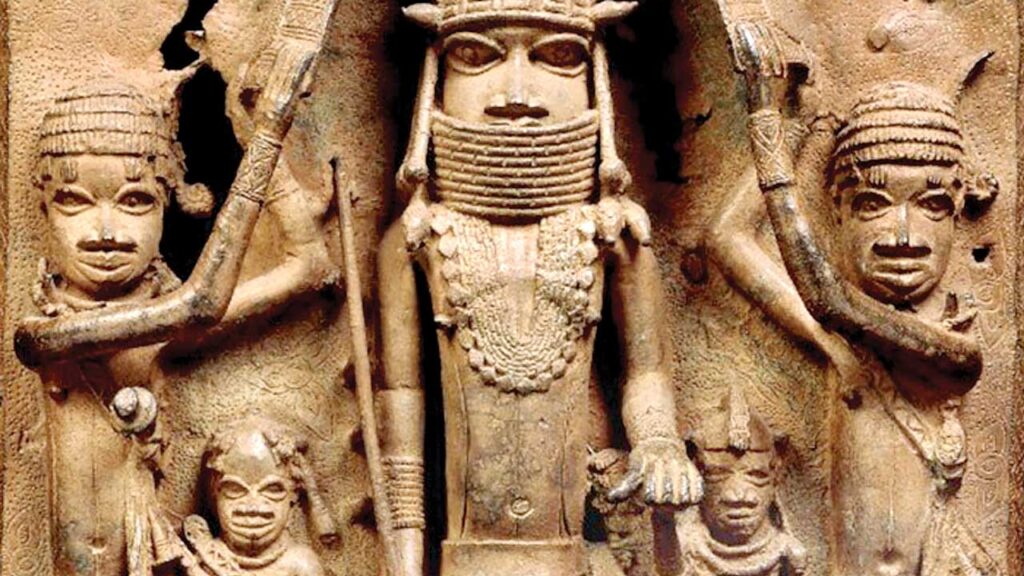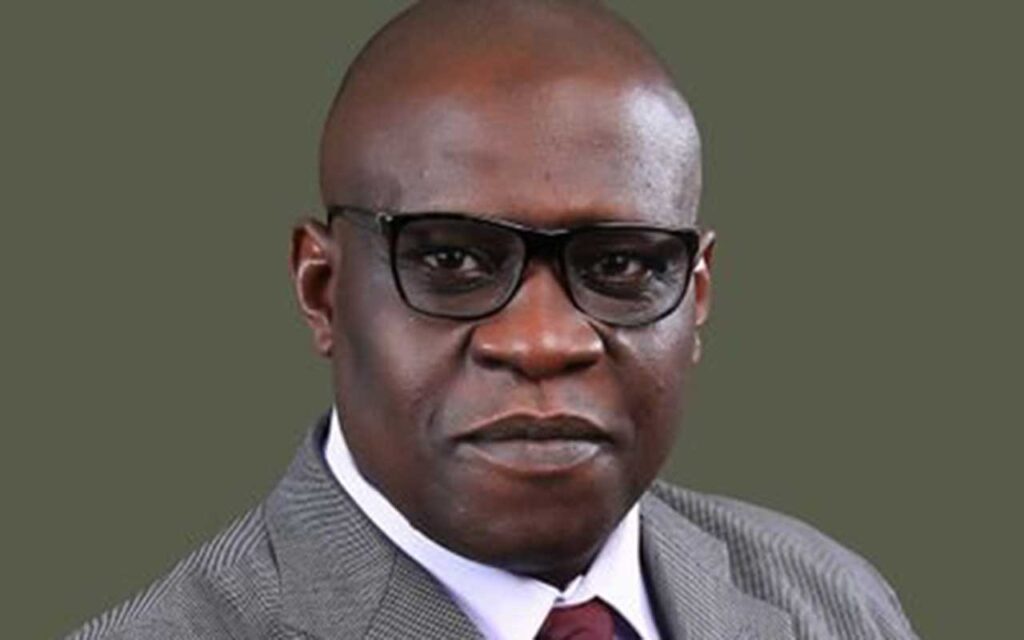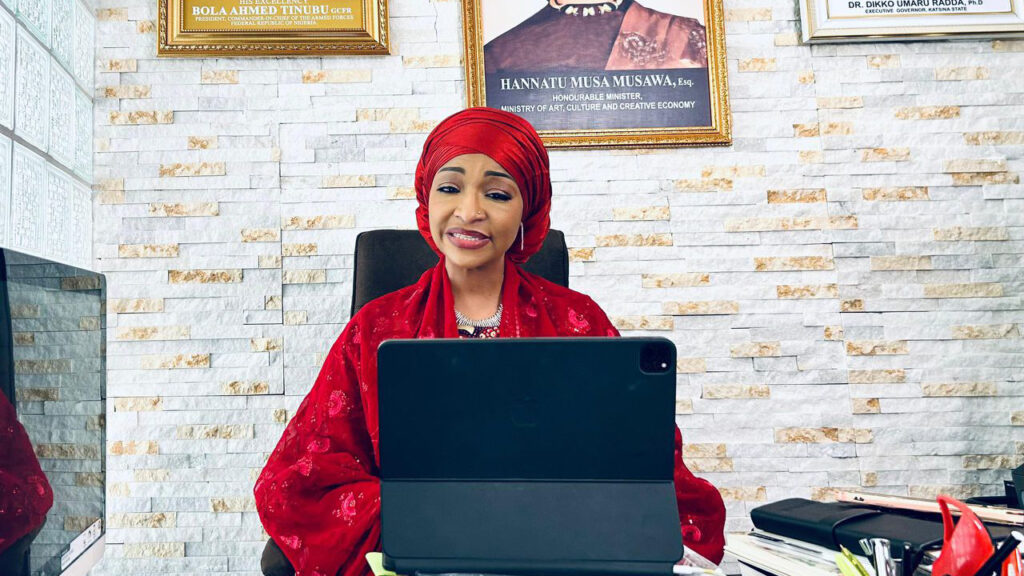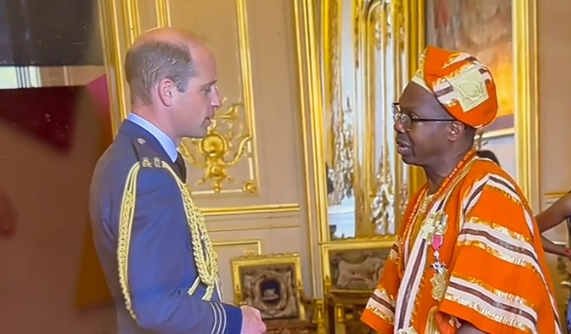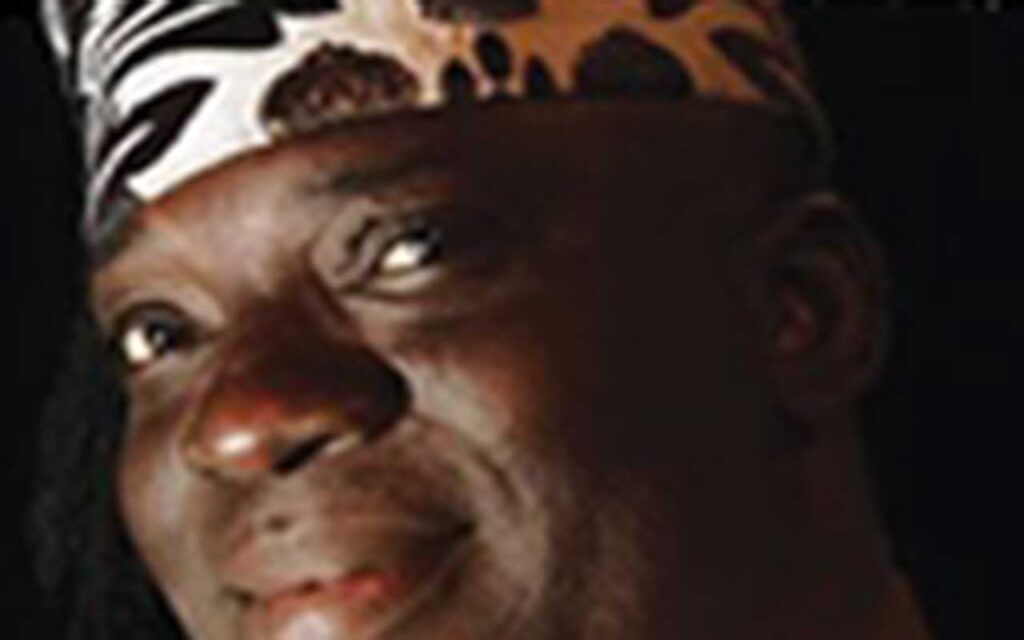
Returning objects to their original homes is a way of righting past wrongs. But there’s more to it than meets the eyes.
The year 2021 started with hope of COVID-19 ending, as life-saving vaccines were rolled out to around 60 per cent of the world’s population, however, it drew to a close with the pandemic entering its third year.
But much of the year, not a week passed by without the return of looted artefacts.
From the Gilgamesh tablet’s return to Iraq after its seizure by US authorities, to the return of 10 artefacts looted by British troops during a punitive expedition to Ethiopia in 1868, 2021, no doubts, was the year of restitution of stolen artefacts. In fact, August saw the restitution of over 100 artefacts to Pakistan by the New York District Attorney’s office, part of the haul confiscated from a discredited antiquities dealer, Subhash Kapoor. In all, nearly 500 pieces were returned to over 11 countries.
In October, a college at the University of Cambridge staged a ceremony acknowledging the official return of a bronze statue of a cockerel to Nigeria’s National Commission for Museums and Monuments (NCMM).
The cock, which was donated to the university in 1905 by the father of a student, is a Benin bronze, stolen during the 1897 British invasion of Benin City, during which the military burnt down the royal palace and other buildings.
The event at Jesus College was followed by a similar handover at the University of Aberdeen, the day after, where a sculpture, depicting the head of a Benin king, was returned to Nigeria.
On December 13, the Oba of Benin, Omo N’Oba N’Edo Uku Akpolokpolo, Ewuare II, eventually signed the necessary documents in line with the British laws regarding returned artefacts.
The Federal Government would, at a later date, hand over the objects to the monarch for keeps.
To safeguard the artworks and others to be returned in future, Oba Ewuare II announced Prof. Wole Soyinka as a member of the board of trustees of the Benin Royal Museum where the returned artefacts would be kept and opened to the public including researchers and scientists.
Also listed are Aghatise Erediauwa, Nduka Obaigbena, Aigboje Aig-Imoukhuede and Ifueko Omoigui-Okauru.
Oba Ewuare II commended the role played by the Federal Government in the return, saying Benin art and culture reflect the past and present glory as well as the splendour of the kingdom.
“As our treasures are returned, our youths will be able to establish a new relationship with the heritage bequeathed by their forefathers.
“The return of all the treasures taken away will begin a new era of Benin history and civilisation. International best practice and the rule of law dictate that restitution and compensation is the new discourse.
“We ask that friendly countries seeking to return our artefacts should do so directly to the Oba of Benin or to the Federal Government of Nigeria who will hold them in trust and return the same to the palace of the Oba of Benin Kingdom as was recently done in Cambridge and Aberdeen,” he said.
THE pressure on the return of looted Benin bronzes recorded a remarkable success on Wednesday, November 17, 2021, when the University of Oxford’s Pitt Rivers Museum, United Kingdom, released an interim report of objects taken during the Benin Expedition of 1897 that are currently held by the school as accessioned objects.
It is the latest museum to begin a process that could lead to the possible return of the works to Nigeria.
Already, the Smithsonian Institution’s National Museum of African Arts in Washington has stopped displaying Benin bronzes.
The American facility was one of the most prominent to return items that were stolen from the Benin kingdom more than a century ago.
Benin bronzes are among the most controversial artefacts to have on display due to their presence in hundreds of museums and collections in the West despite the nature of their status as spoils of war.
In the report released on November 17, 2021, and authored by Dan Hicks, there were 145 objects identified, of the number, 45 were on loan. The report also identified 15 further objects, which may or may not be from the 1897 expedition, including three items on long-term loan from the University’s Ashmolean Museum that were looted during the Benin Punitive Expedition of 1897.
It also introduced 15 further items that may derive from this expedition, and the associated materials including photographs, archives, and watercolour paintings. These collections need to be understood in the context of the Museum’s wider collections of Nigerian material culture.
The Report sets out a series of principles for provenance research into Benin 1897 material. Among these is the importance of transparency. Such is the nature of collections management and provenance research that further objects may be identified in the future, and more will be learned about the objects described here. Omissions and even the possibility of mistakes are an inevitable part of this kind of provenance work, where there is always more to learn.
“But we are committed to as much transparency as possible about these collections, even though there is always further research to be done. There will always be the curatorial inclination to delay putting our current understanding in the public domain, holding back until a definitive account can be given,” said the report.
“The first restitutions were made in 1938 when coral-work crowns and a coral-bead robe that had been on long-term loan to the British Museum were returned to Akenzua II.
“As the 125th anniversary of the attack approaches in 2022, more and more commitments to returning what was looted are being made by museums around the world. So, little is known about these collections that even a definitive list of which institutions hold material that was looted is not available, although in November 2020, the new paperback edition of The Brutish Museums: the Benin Bronzes, colonial violence and cultural restitution included a new provisional list of 165 museums around the world, and the work of the Digital Benin project continues to try to build a global database.
“This document represents a first step to research, define and describe the collections of one of the most significant global collections of Benin 1897 material, that of the University of Oxford’s Pitt Rivers Museum and Ashmolean Museum. A number of key principles guide this research, and may guide that of other institutions with 1897 collections.”
The early collections currently held by the Pitt Rivers Museum from what is today Nigeria document decades of British colonial expeditions, including violence, cultural destructions, confiscations, thefts, trophies of war and military looting.
“Provenance research undertaken for this report has identified that the Pitt Rivers Museum currently holds 145 of the more than 10,000 objects that were looted during the British sacking of Benin City — now in Edo State, Nigeria — in February 1897 and its aftermath.
The acquisitions took place over a 90-year period, with the first object acquired by the Pitt Rivers from Benin Expedition was a brass powder flask purchased from Henry Ling Roth in 1898, while most recently acquired were two wooden combs purchased at Christie’s Auctioneers in 1988. An increased interest in Benin material at the Pitt Rivers came from 1963, when Bernard Fagg assumed the position of curator of the Pitt Rivers Museum.
Of the 145 objects, 43 are on loan from the Dumas-Egerton Trust, two are on loan from Mark Walker, and 100 are owned by the University of Oxford: three in the collections of the Ashmolean Museum, and 97 in the collections of the Pitt Rivers Museum.
The 145 objects looted in the Benin Expedition of 1897 came to the Pitt Rivers from 20 or 21 different sources.
According to the report, “The collection of 145 objects currently in the care of the Pitt Rivers Museum identified in this interim report as looted in the 1897 Benin Expedition represents less than 1.5 per cent of the more than 10,000 objects that were taken in the attack.
“Putting this information in the public domain, along with the list of 15 further objects possibly from Benin 1897, and with the discussion of material from other military expeditions and from 20th-century collecting of various kinds, will, it is hoped, contribute to advancing understanding of what was taken, as commitments to make returns from institutions around the world gather pace.”
Also recently, Republic of Benin’s streets were agog with festivities, as 26 pieces of looted artefacts were returned to the country. There were cultural displays. In fact, billboards on the streets were adorned with some of the art works.
The billboard read: Resitution des tresors Royaux du Benin, which means, Restitution of Royal Treasures of Benin. The return to Benin of 26 works of art looted by France’s colonial troops has fuelled hopes that other European countries will soon follow suit.
Germany and Belgium have taken similar steps, initiating restitution processes with Nigeria and the Democratic Republic of Congo.
The French President Emmanuel Macron had pledged to “return African heritage to Africa” during a visit to Burkina Faso in 2017. His promise began to take shape on Tuesday, November 10, 2021 when France signed a landmark deal transferring ownership of 26 Beninese works of art to the Republic of Benin.
Among the artefacts President Patrice Talon formally welcomed back home were totem statues from the ancient Kingdom of Abomey and the throne of King Behanzin, which were looted when the Abomey Palace was sacked by French colonial troops in 1892.
The objects were in the collection of the Musée du Quai Branly – Jacques Chirac, located in Paris, France. The ethnography museum is reported to hold around 70,000 objects from sub-Saharan Africa.
Before being returned, the 26 works were shown together one last time in France and viewed by “15,000 people in seven days.”
According to the Benin president, Talon, “since 1965, some writers from Dahomey (now Benin) had started asking for the return of those artefacts. From 2016, when I became President, I continued with the request again. We took actions through educated people, associations, non-governmental organisations (NGOs) and the diplomacy.
“I am happy that we have been able to achieve this restitution through cooperation and not wars, which used to happen before between nations, people, kingdoms and communities. For people who know their history, those artefacts are mosaic for ancient or old kingdoms.”
He said, “I want everyone to be at ease or comfortable to establish the relationship or connection he wants or desires with those artefacts.”
President Macron surprised everyone with his promise. “We didn’t expect it. All of a sudden, France started to move,” Marie-Cécile Zinsou, president of the Zinsou Art Foundation, told international media when the news broke.
For the Franco-Beninese dual national, an African art specialist and daughter of former Beninese premier, Lionel Zinsou, the push to return artworks is first of all “a global movement, which will be difficult to avoid from now on.”
She added, “France has, probably, lit a spark” for other countries to follow.
Following France’s lead, German authorities signed a memorandum of understanding with Nigeria in mid-October setting out a timetable for the return of around 1,100 Beninese sculptures now housed in German museums. The first repatriations are planned for the second quarter of this year.
Around the world, “many people have wondered about the provenance of these pieces,” says Zinsou, “but now we have taken action”.
Across France, museums have begun creating job positions specifically dedicated to studying the provenance of their collections. It’s the case at the Quai Branly museum, as well as the Angoulême Museum, which has a large French collection of African and Oceanic art bequeathed by a local doctor and major art collector in 1934.
Belgium, which bears a troubled colonial past, has also embarked on a lengthy process in order to identify and study the provenance of thousands of objects from its former colonies.
The country’s Africa Museum (formerly the Royal Museum for Central Africa) houses some 85,000 objects from the former Belgian Congo (present-day Democratic Republic of Congo).
Thanks to scientific programmes initiated by the museum, and with the help of the National Archives, some 35,000 to 40,000 items have been scrutinised, about half of the museum’s Congolese collection. Between 1,500 and 2,000 works of art have already been classified as ill-gotten gains and are therefore eligible for restitution.
BUT the British Museum and other national institutions such as the V&A, are prevented from permanently returning items by the British Museum Act 1963 and the Heritage Act 1983. The British Museum Act also protects the institution. The 1963 law forbids the museum from disposing of its holdings, except in very specific circumstances.
British museums have long resisted campaigns for the return of Nigeria’s Benin Bronzes, Greece’s Elgin Marbles, Ethiopia’s Magdala treasures and other loot, often citing legislation that bans them from disposing of their collections.
As then-Prime Minister David Cameron said of Greece’s Elgin Marbles and India’s Koh-i-Noor diamond: “No, I certainly don’t believe in ‘returnism’, as it were. I don’t think that is sensible.”
According to British art historian John Picton, who worked for both the British Museum and the state museum commission in Nigeria, the principal reason not to return the artworks is “the lack of any facilities to actually proper house this material.”
According to Zinsou, the London-based museum is mostly concerned about setting a precedent that might encourage other demands.
“The British Museum refuses to return the Benin artworks because [the British] fear that Greece will seize the opportunity to claim the Parthenon friezes,” she says. The Museum has nevertheless declared it was “engaged in a series of dialogues with different parties in Benin (…) and is aware of widespread hopes of future cooperation.”
But talks between the British Museum and African authorities have often reached an impasse. The British government has preferred to adopt a “retain and explain” stance for state-owned institutions, instead of returning pieces: monuments, contested and claimed objects are to be kept by the former coloniser but contextualised.
The German restitution pledge, the largest thus far, has injected momentum into the push for other governments to do the same as nations worldwide grapple with histories of racial injustice. Protest movements have placed a fresh spotlight on old atrocities, toppled statues and called for the recovery of items stolen — often violently — during colonial rule.
Benin bronzes can be found at 161 museums around the world, according to research by Dan Hicks, a curator at the Pitt Rivers Museum at the University of Oxford and the author of “The Brutish Museums.” Thirty-eight are in the United States. Only nine of the institutions are in Nigeria.
Many institutions remain hesitant to relinquish the work. Pressure has swelled over the last year, however, as protesters flooded cities, reinvigorating dialogue around painful memories. Atop the African Union’s agenda in 2011: fighting the coronavirus — and recovering stolen heritage.
REQUESTS for the restitution of cultural property are not a new issue in international law. Long before the government of modern Greece moved to recuperate the so-called Elgin marbles or Parthenon marbles, Lord Byron had criticised Lord Elgin for removing the collection of marble figures and a frieze from the Parthenon and offering them for sale to the British Parliament in 1816.
Nevertheless, the formal request by Greece in 1983 for the return of the marbles remains the best-known and most-discussed restitution paradigm in academic and political forums.

In it, the Greek delegation included in its statement to the UNESCO Intergovernmental Committee for the Return of Cultural Property to its Country of Origin that all countries have the right to recover the most-significant parts of their cultural heritage lost during periods of colonial or foreign occupation.
Due to the emergence of myriad restitution cases starting in the early 2000s, the legal aspects of looting and recovery have attracted intense scholarly interest. And the international nature of the research, which has involved scholars from both North America and Europe, has led to many conferences, which in turn yielded a rich array of anthologies.
Kwame Opoku, cataloguing Africa’s demands for restitution, said they have, however, always existed. The Oba of Benin, Oba Akenzua II, for example, requested, in 1936, and got one regalia back, but this did not signal a change of attitude of the colonial masters.
Bernie Grant, a Labour MP of Caribbean descent (Guyana, MP 1987-2000), made pleas on behalf of the Oba of Benin in the British Parliament but to no avail.
From 1960 to the present day, Opoku noted, African governments have made demands for restitution but with no success.
In 1974, Ghana made claims to restitution the Asante golden artefacts the British Army had stolen in 1874 when they invaded and burnt Kumasi, the Asante capital.
The United Nations and UNESCO have since 1972 been issuing every second year a Resolution on the Return or Restitution of Cultural Property to the Countries of Origin, which urges the former colonial States to return to their former colonies artefacts they took away during the colonial period.
The Western States have regularly ignored the injunction of the world body and continued their illegal possession of the cultural artefacts of their former colonies. This outlaw behaviour of Western States does not seem to bother them.
In 1977, Nigeria requested from Britain the famous ivory hip-mask of Queen-mother, Idia, from the British Museum for the pan-African festival FESTAC 77. After asking for 2 million pounds, Britain declined to lend the mask to Nigeria.
The argument advanced by Britain, such as the climatic difference between the British Museum and Nigeria, infuriated all Africans.
Ethiopia has constantly requested the restitution of the Maqdala treasures looted by the British army in their notorious invasion of Maqdala in 1868.
Britain has also not yet accepted Egypt’s s claim to the Rosetta Stone, while Germany has not admitted to restitute Nefertiti’s bust to Egypt. The bust was brought to Germany in 1913 by Ludwig Borchardt but only displayed in 1923 and now in the Neues Museum, Berlin.
Again, in March 2000, the late Oba of Benin, Oba Erediauwa, sent his brother, Prince Edun Akenzua, to submit a plea to the British Parliament to return the thousands Benin bronzes the British Army had looted in the notorious 1897 punitive invasion of Benin. The petition has become known in history as Appendix 21 and is in the official records of the British Parliament, Hansard Reports. Nothing came out of the Benin plea.
From 2000 on, Africans made several demands for restitution. The Europeans never considered these various demands seriously or mostly denied they had ever been made or just kept silent.
In 2002, 18 major western museums, excluding the British Museums, issued the discredited Declaration on the Importance and Value of the Universal Museums. By this declaration, they sought to disarm those with claims to restitution, especially Greece with its claims to the Parthenon Marbles.
Philippe de Montebello, then director of the Metropolitan Museum of Fine Arts, New York, Neal MacGregor, then Director of the British Museum, London, and James Cuno, then Director of the Art Institute of Chicago, were what Opoku, a foremost restitution activist, declared as the ‘high priests of the universalists’. Through their actions and writings, they defended the right of the Western museums to hold onto looted African artifacts.
In 2007 the Ethnology Museum, now World Museum, Vienna, organised a magnificent exhibition, Benin Kings and Rituals, Court Arts from Nigeria, which traveled later to Paris, Berlin, and Chicago. A symposium organised in connection with the exhibition discussed the question of restitution. The Benin Royal delegation stated that it would be satisfied if each museum present were to return one Benin artefact. That request was rejected by the Western museums that did not seem to recognise this historical opportunity to solve the issue of the Benin artefacts.
By 2007 restitution had become a topic no one could easily ignore, and a lot of publications had been produced on the topic, which had also been adopted, by mass media and the popular press everywhere. Museums and governments had also got used to it and were not unnecessarily worried by it; they could not ignore restitution.
On this background, came the famous declaration of Macron on November 28, 2017, before a large crowd of students at Ouagadougou University that:
The World Museum, Vienna holds 37,000 (200 from Benin) but so far, we do not know whether Austria is going to restitute looted African artefacts or not as there has been no definitive statement on the issue by Austrian authorities. The Minister for Foreign Affairs is said to be in the process of developing a new Africa strategy for Africa and a motion for a resolution proposed by the NEOS party would request the Foreign Minister to include restitution of African artefacts of problematic or unexplained provenance.
The Belgians, who kept quiet for a long time, have finally decided to restitute to the Democratic Republic of Congo artefacts that had been looted under the colonial regime.
During a visit to the Democratic Republic, State Secretary for Scientific Policy, Recovery Program and Strategic Investments, Thomas Dermine, reaffirmed the determination of Belgium to restitute looted Congolese artefacts:
“The objects illegally acquired by our ancestors do not belong to us. They belong to the Congolese people. Full stop. We must adopt a position from a Congolese perspective: to reconstitute the cultural identity of a people, a perspective that has been deprived for too long of the memory, creativity, and spirituality of its ancestors.”
The British Museum holds more than nine hundred Benin bronzes and other precious African artefacts, such as Asante gold and Ethiopian gold, silver, and manuscripts, but refuses to return any artefact and is willing to consider loans to the owners.
These returns of artefacts to Africa are all very well. But we should be vigilant and avoid any complacency. We are far from receiving the restitution of artefacts we demanded. Take, for example, the request by the Republic of Benin. Benin requested in 2016 the restitution of 5000 artefacts looted by the French in 1892 and received on 10 November 26 precious treasures. At the rate of 26 objects per year, how long will it take to return 5000 items? 200 years? Patrice Talon, President of the Republic of Benin, made it clear to Emmanuel Macron after the Culture Ministers of France and Benin had signed an agreement transferring 26 objects that he was not satisfied with the number of items restituted.
“President Macron was aware of the inadequacy of 26 objects and blamed the French rule against inalienability. Still, he mentioned a proposal for general law, loi-cadre, which would facilitate more restitution and dispense with the requirement for specific legislation anytime there is a need for restitution. The French Senate will discuss the draft law on 15 December 2021. France is returning twenty-eight (28) looted artefacts to Benin, Senegal, and Côte d’Ivoire. At the rate of twenty-eight (28) objects per year, how long will it take France to return the 90,000 looted African objects in France? Three thousand two hundred fourteen (3,214) years will be necessary.
“ If we turn to the German promise to return in 1130 Benin bronzes to Nigeria, we realize that they are not returning all the looted Benin artefacts in Germany. The German Contact Point for Collections from Colonial Contexts Publishes an Inventory of Benin Bronzes in Museums in Germany lists 1163 Benin artefacts.”
The Nigerians may have agreed to leave some Benin objects in Germany following their signing of a Memorandum of Understanding with Germany on 13 October 2021. Still, they are not showing anybody the text of the agreement. It is evident from the German government’s decision of 29 April 2021, not all German institutions that hold Benin artefacts agreed to the principles enunciated in the statement.
Moreover, Germany’s decision to return Benin bronzes relates only to Benin artefacts. What about artefacts from Angola, Burundi, Cameroun, Ethiopia, Ghana, Rwanda, Tanzania, etc? These must also be restituted. The struggle for restitution of looted African artefacts is not limited to Benin artefacts, even though these are the best-known examples of flagrant European looting and illegal possession of African artefacts. Besides Benin bronzes, we still have Asante gold, Ethiopian gold, silver, and manuscripts in Western museums.
We should resist attempts to appease us with token restitution, return of a few artefacts when the Western museums have been holding thousands of our artefacts for more than one hundred and thirty years – Musée du Quai Branly, France has 75,000, British Museum, 70,000, Africa Museum, Tervuren, Belgium 180,000. The racist arguments of the former colonial masters appear in their present statements even when they accept restitution in principle.
A MAJOR hurdle for legal claims is the question of who can represent groups of peoples, tribes or families who owned the artefacts more than a century ago.
In agreeing to a common set of principles, the authorities also vowed to distinguish between art looted during the Nazi era — on which the country has made some progress since signing the Washington Principles two decades ago — and artefacts taken during colonial times — which until recently were mostly ignored.
The legal undergirding for cultural diplomacy and the return of cultural property is embodied in the principles of international legal conventions.
Definitions of “cultural property” in international conventions determine not only what is protected under the conventions, but also set forth legal and ethical principles for states — and by extrapolation for stakeholders, be they museums, collectors, salvagers, indigenous groups or multinational companies — with respect to cultural heritage.
The current significant international conventions that form the legal regime for the protection of moveable cultural property are the Hague Convention, the 1970 UNESCO Convention and its companion, the UNIDROIT Convention on the International Return of Stolen or Illegally Exported Cultural Objects.
The 1970 UNESCO Convention was adopted in response to the widespread pillaging of archaeological sites and envisages diplomatic action at the interstate level to achieve the return of cultural property. Principally, UNESCO works at the level of government administrations: Governments are required to take action at the request of a state party to the convention to seize cultural property that has been stolen. They must also collaborate to prevent major crises in the protection of cultural heritage.
Barbara T. Hoffman is a prominent New York-based art, intellectual-property and international-cultural-heritage lawyer, noted that cultural politics in the past centered on debating cultural-heritage diplomacy in terms of questions of ownership.
Previously, the essential question was, Who owns the past? The cultural diplomats of today ask, How can we promote global and national economic development while at the same time preserving local diversity and cultural identity? How can the conservation of traditional cultures be achieved without impoverishing stakeholders? By what compass are we to chart a course of globalisation that is fair, just and benefitting to all, including those whose cultures risk extinction when confronted with globalisation?
In formulating responses, a cultural diplomat may find guidance in the set of ethical principles currently taking shape in international practices, which favor return to the source nation of antiques and artifacts. These include principles such as access, benefit sharing, non-exploitation of an economically weaker party, the preservation of the integrity of cultural context and cooperation among nations in the return of cultural objects to the country of origin.
Cultural diplomats and foreign policy professionals should try to resolve problems by amicable means and cooperative solutions, including mediation, which can also facilitate a continuing value-enhancing and collaborative relationship between the parties.
In such a way, the cultural diplomacy paradigm might reconfigure traditional notions of property not as the right to exclude, but as a web of social relationships where title gives rise to an obligation consistent with the principle of fostering cultural dialogue.
With the latest development, the ‘Benin Dialogue Group’, which has been working to resolve this issue, will go under.
BDG is a multi-lateral collaborative working group that brings together museum directors and delegates from Austria, Germany, the Netherlands, Sweden and the United Kingdom with representatives of the Edo State government, the Royal Court of Benin and the National Commission for Museums and Monuments (NCMM), Nigeria.
The BDG held its sixth meeting in Benin City from July 5 to 7, 2019 at the invitation of the Governor of Edo State, Mr. Godwin Nogheghase Obaseki.
A central objective of the group is to work together to establish a museum in Benin City that will facilitate a permanent display reuniting Benin works of art dispersed in collections around the world.
During the meeting, the BDG discussed the new Royal Museum in Benin City and joint exhibition planning. At the governor’s invitation, Sir David Adjaye led a discussion concerning the architectural vision for the museum in Benin City.
As part of the outcomes, the group drafted a vision statement:
“The vision is to establish a new royal museum to reunite in Benin City the most significant of Benin’s historical artefacts, currently in various locations around the world. The Museum will showcase the rich history and culture of the Benin Kingdom from the earliest archaeological evidence to contemporary creative expressions, in recognition of the fact that Benin City continues to be a vibrant artistic centre. The museum will be founded as a place of remembrance, education and inspiration for the people of the Benin Kingdom and audiences from around the world.”
In a milestone achievement, the UN General Assembly adopted by consensus the resolution entitled “Return or restitution of cultural property to the countries of origin” at its 44th plenary meeting on December 6, 2021. The resolution was spearheaded by Greece and co-sponsored by 110 other member states. Recognising that it affects all regions of the world, the resolution expressed deep concern about the continuing illicit trafficking in cultural property as well as the loss and vandalism of cultural property from archeological and other sites, in particular in areas of armed conflict.
The resolution welcomes the report of the Secretary-General submitted in cooperation with the Director General of UNESCO, while at the same time recalling all UNESCO’s seven cultural Conventions and other important international agreements related to return and restitution of cultural property. It also recalls Security Council resolution 1483 (2003), in particular the paragraph relating to the restitution of the cultural property of Iraq, and Council resolution 2056 (2012) on the situation in Mali.

